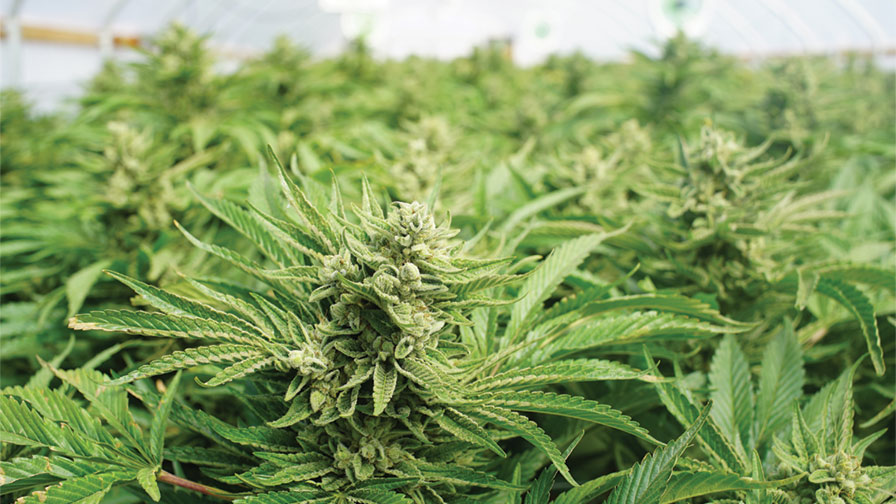Best Practices for Commercial Cannabis Propagation
 The establishment of optimal planting stock in cannabis enables the continuous developmental momentum of the crop, from propagation to harvest. Although it may be preferable for cultivators to outsource propagation to specialist nurseries in some cases, many commercial facilities prefer to retain critical cultivation processes in-house. Fortunately, cannabis is easy to propagate through seed germination, or asexually through cloning or liner production.
The establishment of optimal planting stock in cannabis enables the continuous developmental momentum of the crop, from propagation to harvest. Although it may be preferable for cultivators to outsource propagation to specialist nurseries in some cases, many commercial facilities prefer to retain critical cultivation processes in-house. Fortunately, cannabis is easy to propagate through seed germination, or asexually through cloning or liner production.
Cannabis is dioecious, meaning that pistillate and staminate (female and male) reproductive organs occur on distinct individuals within most populations. This reproductive feature results in genetic recombination at each generation, and a greater phenotypic diversity relative to self-pollinating plant species. Dioecy further complicates seed propagation of cannabis at commercial scale, as only pistillate plants are desirable from a cannabinoid production perspective.
Best Practices for Cuttings
Currently, most commercial cannabis cultivars for the cured flower market are propagated through clonal reproduction, or cuttings. Totipotency, the cellular plasticity of plants, enables the asexual reproduction of many genetically identical clones from a mother plant. This type of propagation enables the production of crops that are consistent for all traits, including cannabinoid and terpene synthesis, vigor, and pest resistance.
Cannabis cuttings should be taken from actively growing shoots of healthy plants. At the time of removal from the donor, cuttings are trimmed and then immediately immersed in water or a rooting solution to maintain water transport through the shoot. Rooting solutions commonly include plant tonics such as B1, growth factors present in seaweed and other botanicals, and bioprotectants to limit fungal pathogen establishment.
Cuttings can be successfully rooted in various media provided that appropriate cultural conditions are maintained. A small format (plug, puck, or cube) is typically used for rooting. The air-water ratio within the media is critical to the successful establishment of cuttings. Initially, high saturation percentages are required to establish water transport through cuttings, and gradual drying of the media will encourage oxygen access and promote adventitious rooting.
Media is prepared using a dibble to receive clones. As each cutting is removed from solution, the lower portion of the stem is excised 3 to 4 inches from the growth tip using sharp, clean scissors. This cut is executed at an acute angle to promote water uptake by xylem and expose undifferentiated cells within phloem tissues for root initiation. Dipping the cutting in rooting formulations containing synthetic auxins prior to seating can decrease the time required for formation of root primordia.
Once firmly seated in media, trays of clones are placed in an environment that will enable the cuttings to retain turgidity until roots form. This climate typically entails 75% to 90% relative humidity, with a temperature of 72°F to 80°F. Lighting should be low intensity (150 to 250 µmol) to limit photosynthesis and attendant water transport demands. These climate parameters can be maintained within propagation areas using humidifiers, energy curtains, and other climate modifiers. Adventitious rooting will occur within six to 12 days for most cultivars.
Take Care in Germination
Although phenotypic variability continues to limit seed-based propagation for cured flower production, seedling propagation will continue to be compelling for producers focused on the commodity cannabinoid market. To capitalize on the labor efficiencies inherent to seed germination for production crops, an affordable source of feminized seeds that are phenotypically consistent for important horticultural traits is required. Due to the unit costs associated with the purchase of quality cannabis seeds (or achenes) relative to those of more developed crops, additional care in their germination is often justified.
Germination ratios of cannabis achenes vary greatly, and are influenced by parentage, stratification, storage, and cultural conditions. Cannabis achenes should be stored in a dark, dry, cool environment. This can be achieved by packaging in opaque, sealed glass containers containing desiccant packs and storing in the refrigerator. Cold stratification can effectively break dormancy in cannabis achenes.
Scarification of the seed coat will increase germination success and consistency. This can be achieved by soaking cannabis achenes for 16 to 20 hours in a hydrogen peroxide solution. In addition to softening the seed coat, this treatment increases oxygenation and will suppress any fungal pathogens that may be present. When longer soak times are used, seed tails will emerge from achenes to the extent that they may be subject to damage at sowing. An appropriate scarification solution for this process can be made by combining one part of 3% household H2O2 solution to six parts water. This results in an approximate solution of .5% H2O2.
When manually sown, seeds should be well seated, in complete contact with the media, and maintained at an ideal air-water ratio. Seeds should be covered by no more than 2× their diameter with friable media and watered in. Germination climate zones should be maintained at 60% to 70% relative humidity with active airflow. Once the first true leaf set has been established, most seedlings will benefit from relatively high light levels (more than 250 µmol) to limit etiolation or stretching. Under appropriate germination conditions, cotyledons, or seed leaves, should be seen to emerge within three to six days following sowing.
Propagation climates also favor the establishment of fungal pathogens. Scouting of these areas for signs of disease pressure must be performed regularly and integrated pest management practices proactively applied. Bioprotectants are commonly employed to manage diseases such as damping off, and persistent beneficial predator populations can be established early in plant life cycles.
Each crop rotation presents the opportunity for an exceptional production cycle. The propagation and establishment of superior plants is the first step in this pursuit of excellence.










